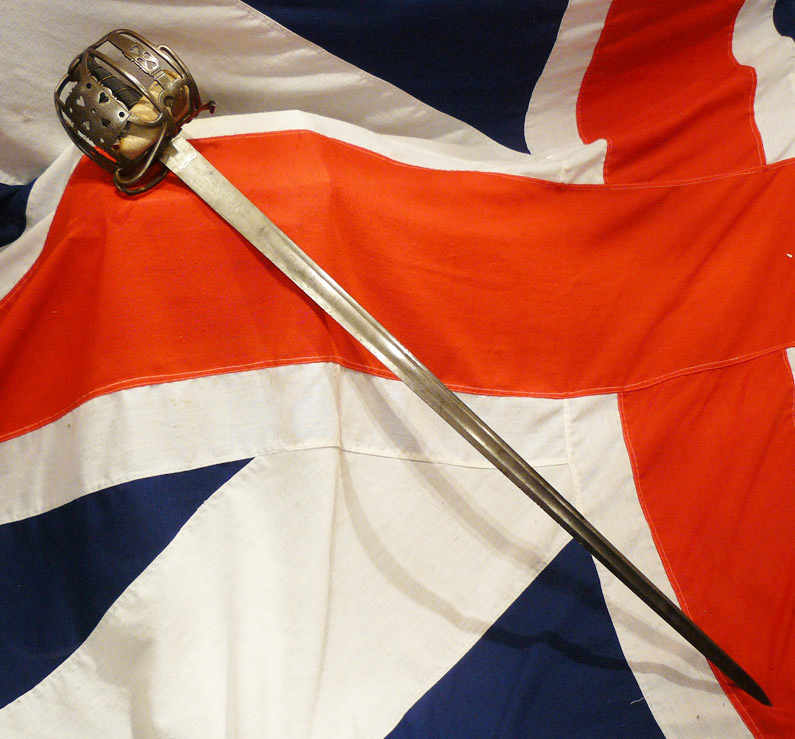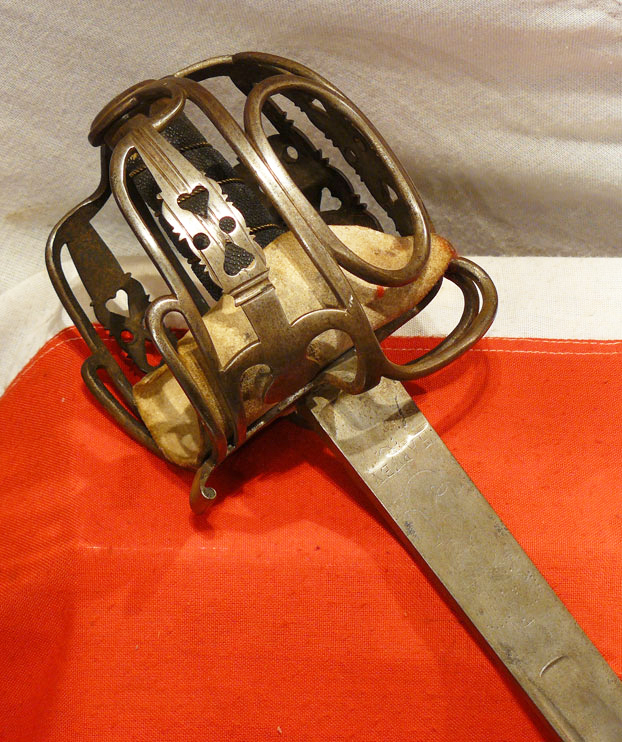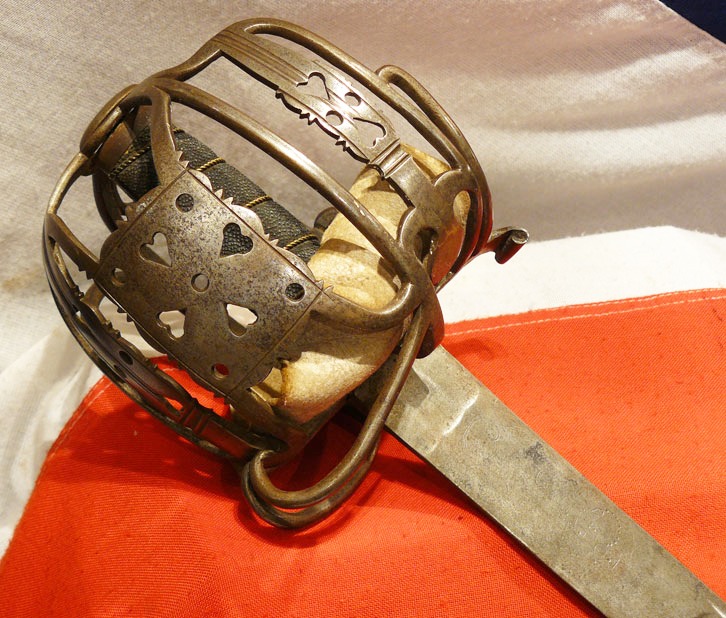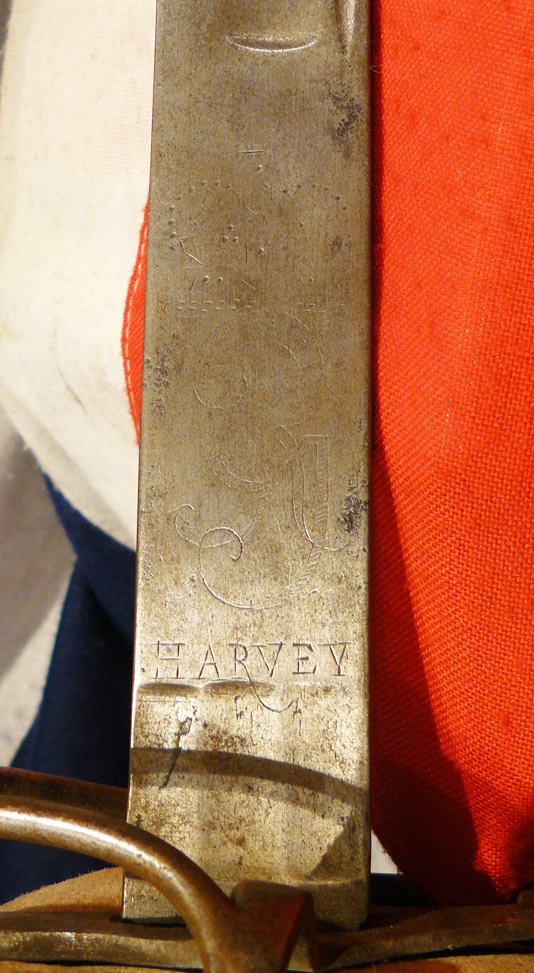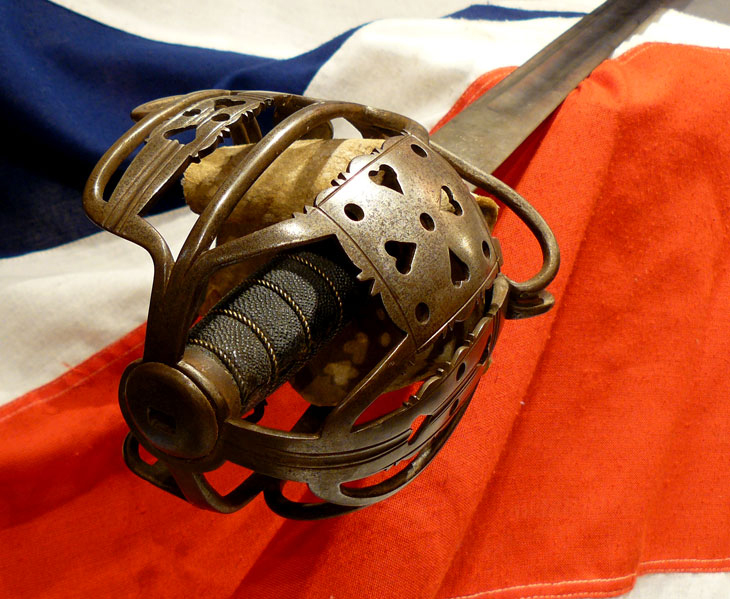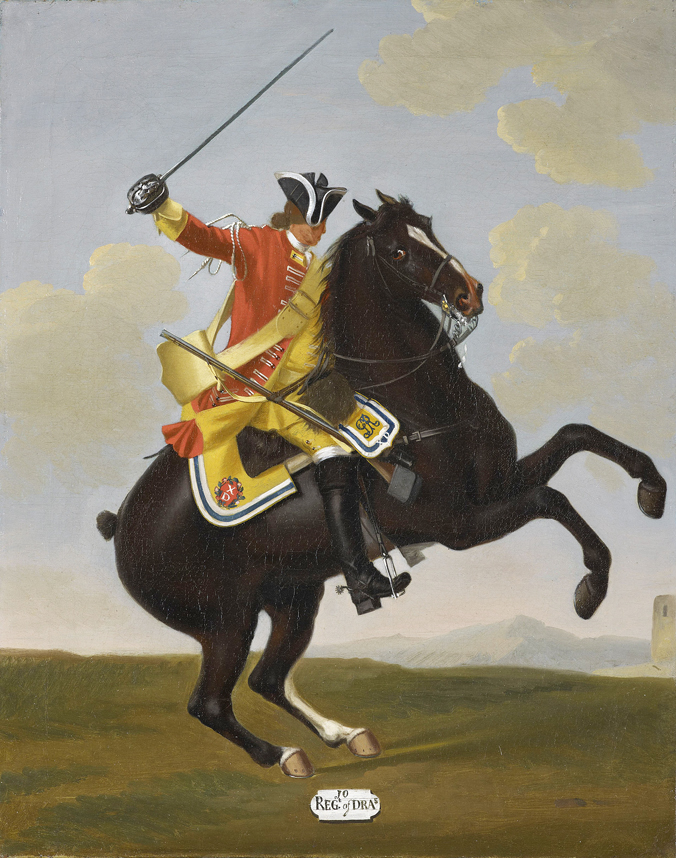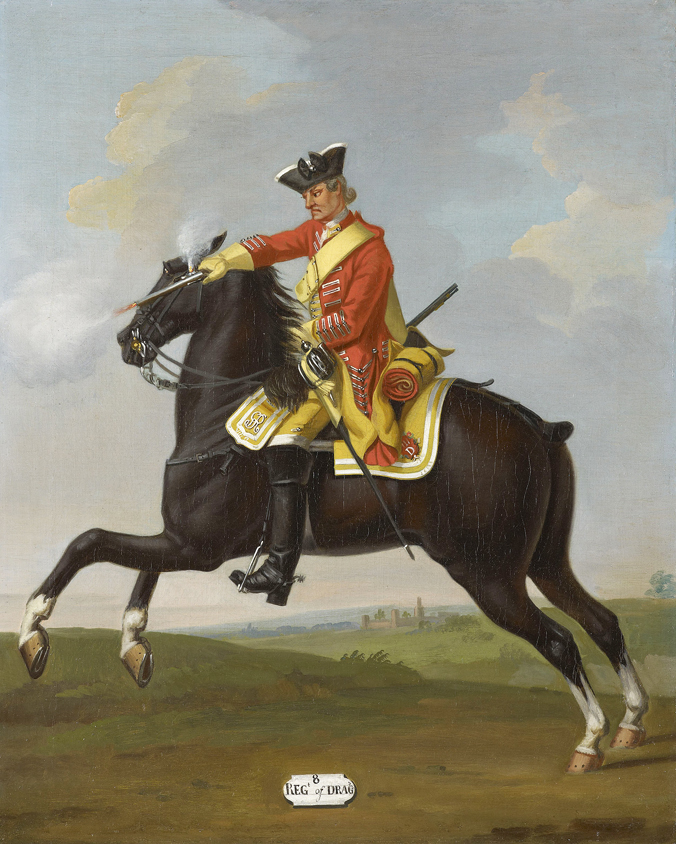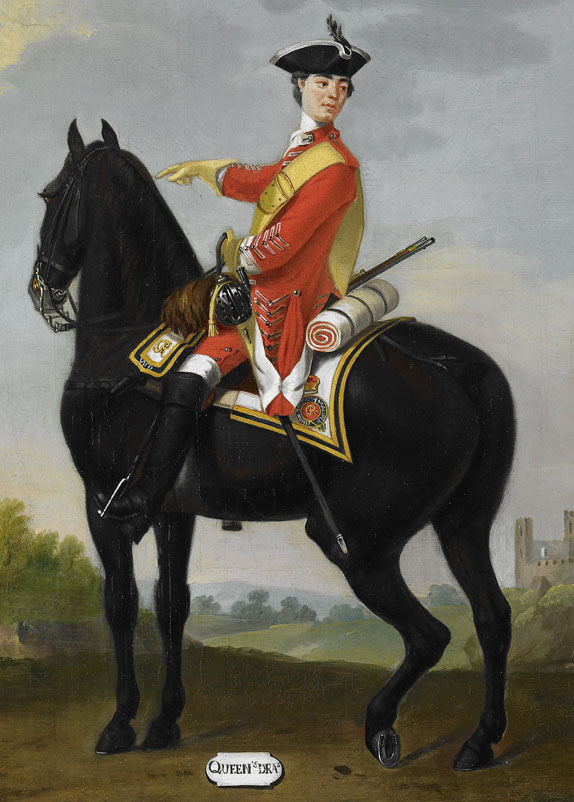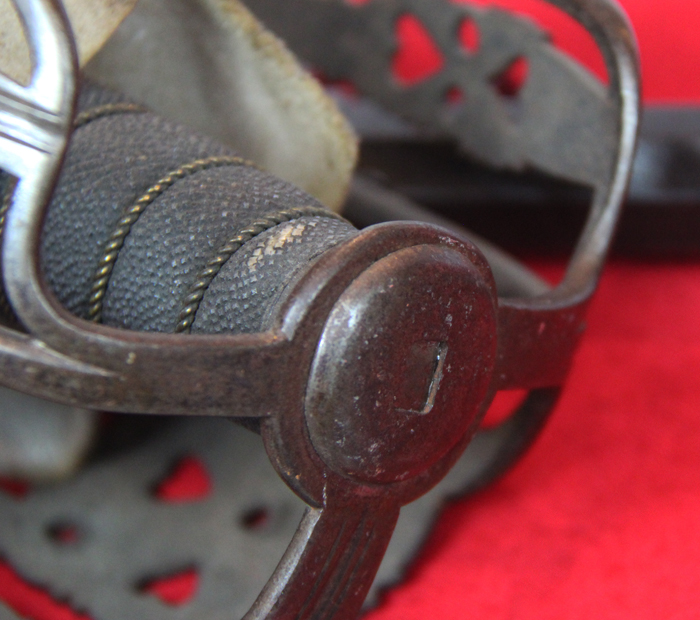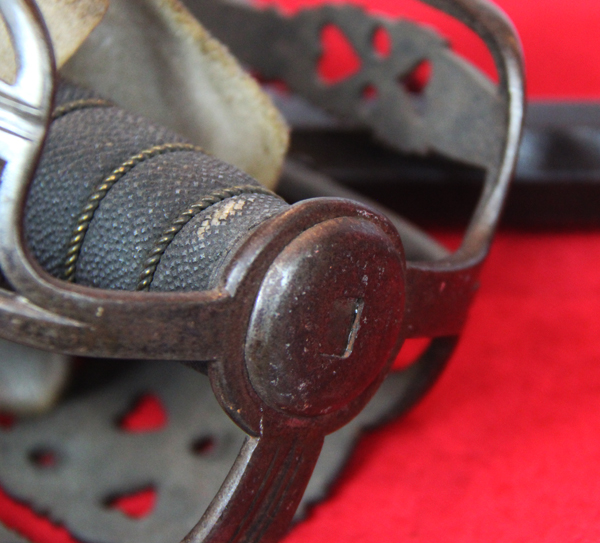A Spectacular & Beautiful 'Harvey' British Dragoon Basket Hilted Sword, Culloden Period, With Large King George's Crown & Cypher Engraved Blade Museum Grade Example
As used by the Scot's Dragoon's and the 7th Queens Dragoons, in fact all the British heavy dragoons in the 1740's up to 1790's. From the Battle of Culloden until the American Revolutionary War in the 1770's.
Likely made by the world famous English blade maker of his day, Samuel Harvey, and bearing the royal GR Cypher of King George. The Harvey surname was one of the marks of renown Birmingham maker, Samuel Harvey, 1718-1778, who supplied many basket hilted swords to the British Crown, mostly for use by Highland troops. This sword is marked with the surname alone, HARVEY below the Crown and Cypher the overlapping monogram of GR for King George. His more common mark was a running wolf, his other marks could be Harvey or S.Harvey. The fabulous basket hilt has the large oval ring insert, for the holding of the horses reins while gripping the sword when riding to battle, and part of the original buff hide basket liner. Wire bound fishskin grip, discoid pommel.
The British dragoon regiments were a decisive force in the Battle of Culloden for example; At the close of the battle the stand by the Royal Ecossais may have given Charles Edward Stuart the time to make his escape. At the time when the Macdonald regiments were crumbling and fleeing the field, Stuart seems to have been rallying Perth's and Glenbuchat's regiments when O'Sullivan rode up to Captain Shea who commanded Stuart's bodyguard: "Yu see all is going to pot. Yu can be of no great succor, so before a general deroute wch will soon be, Seize upon the Prince & take him off ". Shea then led Stuart from the field along with Perth's and Glenbuchat's regiments. From this point on the fleeing Jacobite forces were split into two groups: the Lowland regiments retired in order southwards, making their way to Ruthven Barracks; the Highland regiments however were cut off by the government cavalry, and forced to retreat down the road to Inverness. The result was that they were a perfect target for the government dragoons. Major-general Humphrey Bland led the charge against the fleeing Highlanders, giving "Quarter to None but about Fifty French Officers and Soldiers He picked up in his Pursuit". The basket hilted sword of this very form and character were used by British heavy dragoons for several decades, importantly in the American Revolutionary war. There is a near identical sword by Harvey, bearing the same form of maker mark and crown GR in a collection of American War of Independence weaponry featured in "Swords and Blades of the American Revolution" by George C. Neumann. Page 148 sword 261s
The shortage of cavalry in the Revolutionary War was a major drawback for the British. A strong cavalry presence at battles like Long Island and Brandywine could have enabled the British to encircle the Americans and prevent their retreat. It is possible that a strong cavalry force would have captured Washington's army entirely during the march south through New Jersey in 1776. This is the form of sword used by the Scot's Greys Dragoons in the 7 Years War against France, and by the 7th Queen's Dragoons. One of the earliest basket-hilted swords was recovered from the wreck of the Mary Rose, an English warship lost in 1545. Before the find, the earliest positive dating had been two swords from around the time of the English Civil War. At first the wire guard was a simple design but as time passed it became increasingly sculpted and ornate. During the 18th century, the fashion of duelling in Europe focused on the lighter smallsword, and fencing with the broadsword came to be seen as a speciality of Scotland. A number of fencing manuals teaching fencing with the Scottish broadsword were published throughout the 18th century. Portraits from the time show this very sword as worn. 35 3/4 inch blade length
Code: 21608

